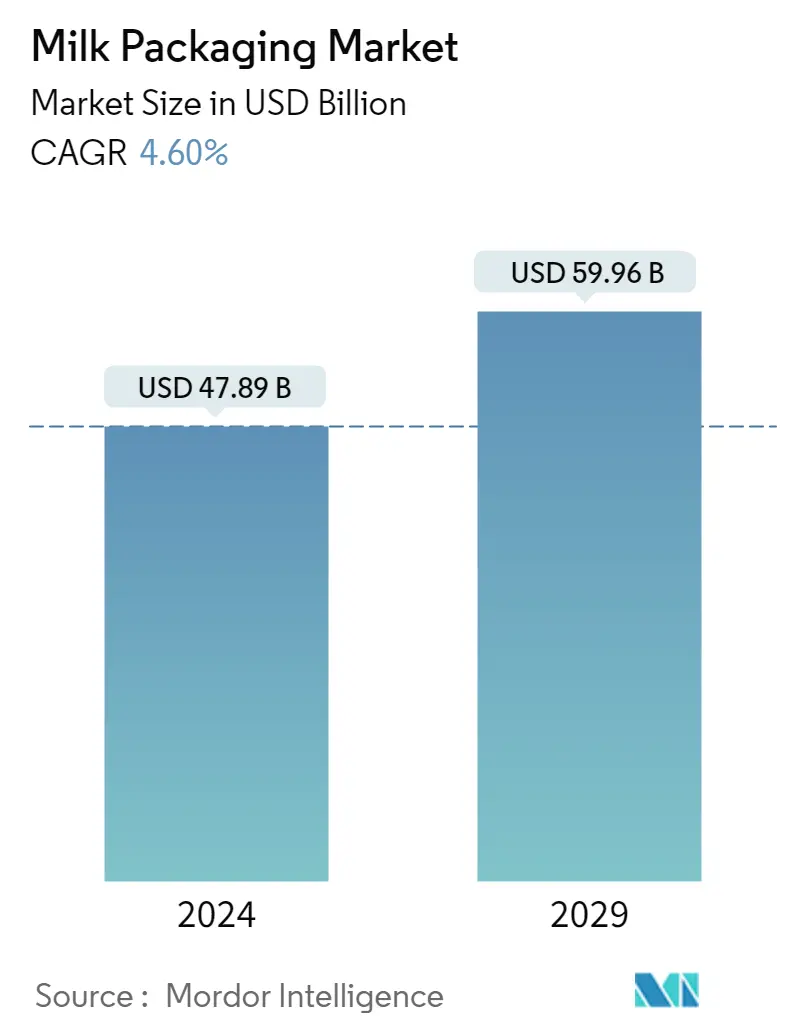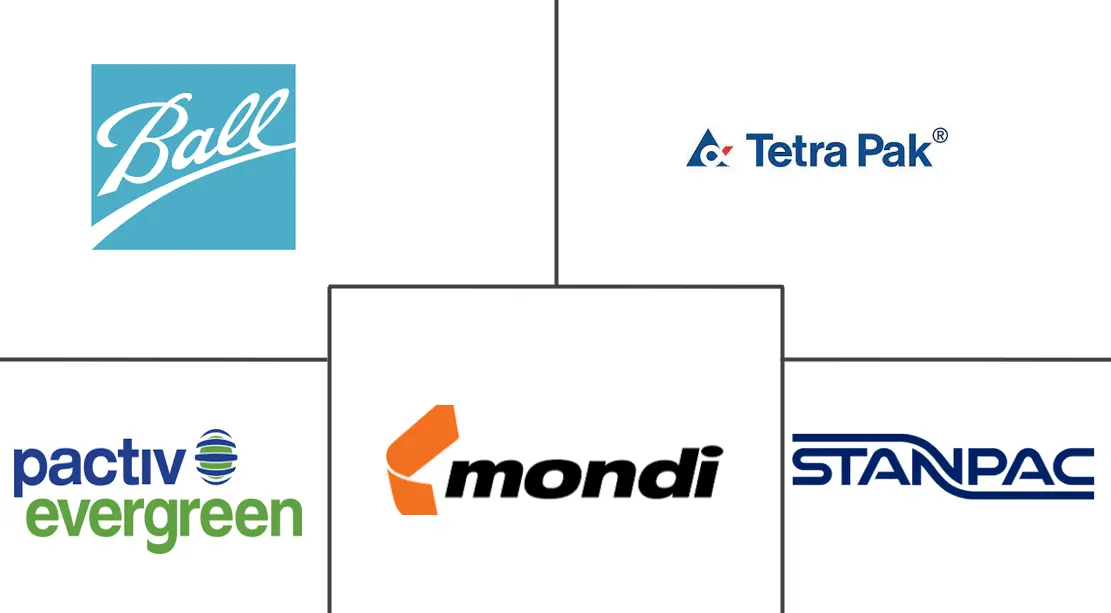Market Size of Milk Packaging Industry

| Study Period | 2019 - 2029 |
| Market Size (2024) | USD 47.89 Billion |
| Market Size (2029) | USD 59.96 Billion |
| CAGR (2024 - 2029) | 4.60 % |
| Fastest Growing Market | Asia Pacific |
| Largest Market | North America |
Major Players
*Disclaimer: Major Players sorted in no particular order |
Need a report that reflects how COVID-19 has impacted this market and its growth?
Milk Packaging Market Analysis
The Milk Packaging Market size is estimated at USD 47.89 billion in 2024, and is expected to reach USD 59.96 billion by 2029, growing at a CAGR of 4.60% during the forecast period (2024-2029).
The growing inclination toward eco-friendly packaging and increasing flavored milk consumption is expected to drive market growth.
- Milk is the most consumed dairy product in the world. The high content of moisture and minerals in milk makes it very challenging for vendors to store it for a long period. It is one of the major reasons for milk being traded as milk powder or processed milk. More than 70% of fresh milk packaging is contributed by HDPE bottles, leading to lesser demand for glass bottle packaging. The trend of on-the-go consumption, the convenience of the easy pour, appealing packaging quality, and health awareness reflected by the popularity of drinkable dairy-like, soy-based, and sour milk created a significant demand for milk packaging.
- According to FAO, global milk production is projected to grow by 177 million metric tons by 2025. Due to changing lifestyles and rapid urbanization, increasing consumer preference to gain proteins from dairy products rather than cereal sources. It is expected to drive the demand for products, like milk, over the forecast period. Such trends are further expected to influence the milk packaging market.
- Bio-based packages are more sustainable than standard milk cartons, reducing the manufacturer's reliance on fossil-based polyethylene plastic in the lining. Consumer interest in sustainability is increasing, with research indicating that people of all ages believe businesses should take responsibility for their environmental footprint.
- Moreover, cartons are being adopted as an ideal option for packaging milk for retail distribution. Companies are increasingly adopting aseptic cartons and pouches for milk packaging. Research shows that the organoleptic quality of aseptically processed UHT milk includes significant benefits in lactulose, lactoserum proteins, and vitamin content compared to retort processing.
- However, consumers and manufacturers are worried about the detrimental effects of plastics and other non-biodegradable packaging materials. As a result, companies are converting to biodegradable packaging that is good for the environment. Manufacturers employ green packaging techniques that emphasize using lighter materials and promote recycling. Environmental law is also projected to impede the growth of milk since greenhouse gas emissions from milk packaging represent a significant part of total emissions in some countries, and any changes to associated rules may influence milk production.
- Due to lockdowns in several of the region's important countries that interrupted trade and shut off large areas of the food market from consumers, COVID-19 substantially influenced the milk packaging markets. The temporary shift in consumer preference toward eating at home delayed the modest rise in retail sales. Further, the Russia-Ukraine war includes an impact on the overall packaging ecosystem.
